We get it. Some people love making stays, and some people don’t. Even if you are someone who loves making stays, they are time intensive, and relatively expensive to make. So it’s very tempting to make one pair of stays that can work for a wide date range. Not surprisingly, lots of people have asked us…
Can you wear the Cassandra Stays for dates other than 1760-1780?
We’ve dated the Cassandra Stays pattern to 1760-1780 because that was the date range of the extant stays we based the pattern on where we were absolutely confident in the dating of the stays. However, we have been very cautious in our dating, so the Cassandra Stays are definitely plausible for decades before 1760, and about 15 years after 1780, for those who preferred a more old-fashioned fit and silhouette for their clothes.
Wearing the Cassandra Stays under 1730-50s outfits:
There are numerous examples of stays that are dated to earlier than 1760 which have similar pattern pieces and boning layouts to the Cassandra Stays, such as these examples:
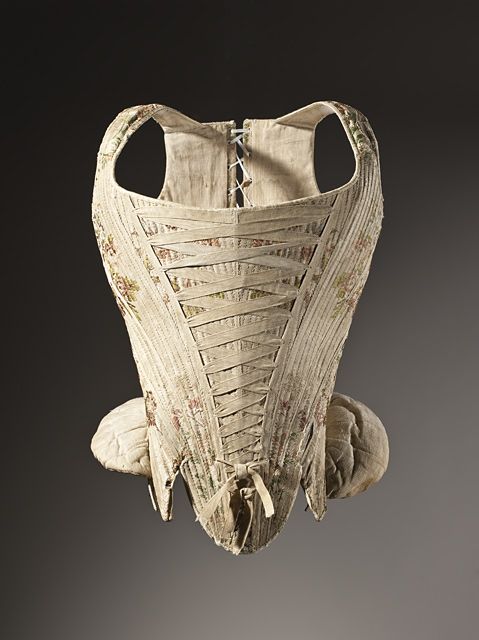
Woman’s Corset (stays), France, circa 1730-1740, Silk plain weave with supplementary weft-float patterning

Corset (Stays), 1740–60, American, linen, leather, whalebone, Brooklyn Museum Costume Collection at The Metropolitan Museum of Art, Gift of the Jason and Peggy Westerfield Collection, 1969, 2009.300.3330a–d
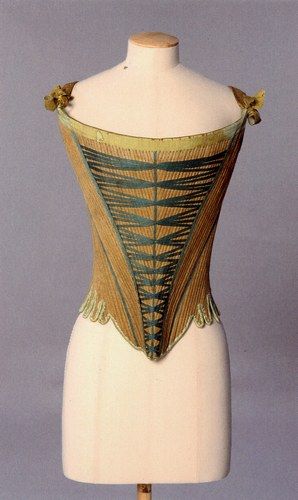
Corset (stays) with green thread trimming, ca. 1755
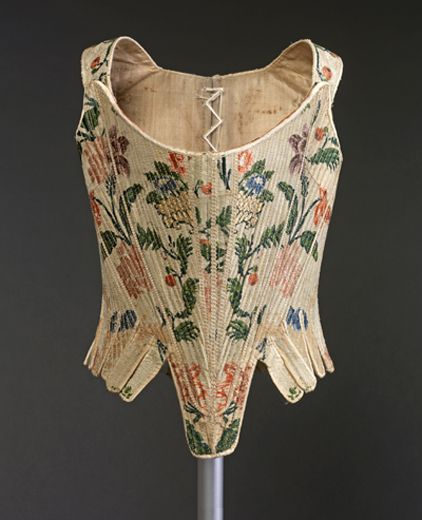
Spanish Stays, ca 1750
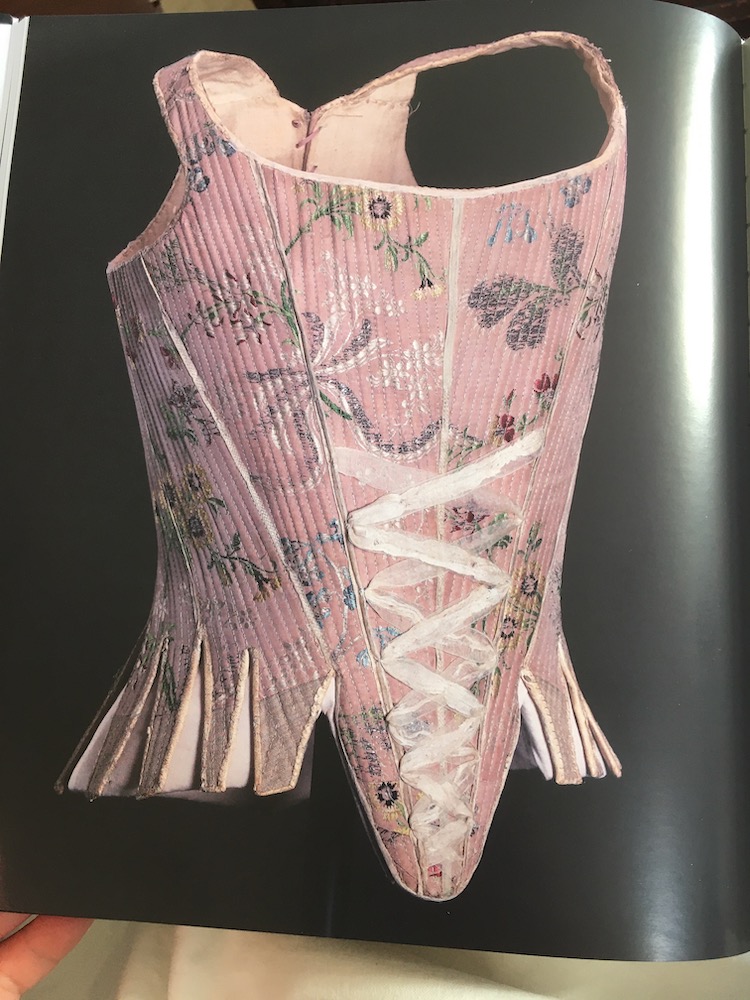
Stays of violet taffeta dated 1750-60, featured on page 110 of Stays or a Corset, Narodni Muzeum, Czechia
However, we’re not entirely confident that the dating on all of these stays is accurate. We were not able to examine them in person or see patterns taken from most of them, and some of them have very limited information available. Because of this, we chose not to rely on them as absolute evidence this style of stays was worn in earlier decades.
Of the stays I showed above, the final pair, of violet taffeta is very well researched and the date range is probably accurate. Stays, or a Corset? includes a pattern for the stays, and it is very similar to the Cassandra Pattern. The primary difference is that the seam lines in the violet taffeta stays are straighter than those for the Cassandra.
If you do want to use the Cassandra Stays patterns for 1730s-50s costuming, you can make it shape your body so it more closely resembles earlier stays by:
- Wearing it without the bust rail. The bust rail is a very late 1760s-onward feature.
- Wear it with a front busk to create a flatter, straighter front line, typical of earlier decades.
- If you could plausible go with either the Curvy Fit or the Straight Fit, choose the Straight Fit: the silhouette of earlier stay patterns is straighter, with less curvature to the seams, and less waist compression.
- Wear View B with the optional stomacher. The stomacher will flatten the front silhouette.
Wearing the Cassandra Stays under 1780s & 90s outfits:
The date range given for the Cassandra Stays is when this style of stays was most fashionable. Stays like the Cassandras continued to be worn throughout the 1780s and 1790s by less fashionable women. This includes those who preferred a more old-fashion silhouette (often older women) and by poorer wearers who could not afford to update their stays. So wearing them for 1780s and 90s is totally accurate, as long as you’re not aiming for high-fashion!
However, as Jenni amply demonstrates below, it is entirely possible to achieve a very high-fashion, 1780s prow-front silhouette with the Cassandra Stays:

How did we do it? First, we fitted her Cassandra Stays so that they were a little snug in the bust. This means they can be worn laced over a stomacher with the lacing in an V shape, to achieve a very 1770s and earlier silhouette. For a 1780s silhouette they are worn without a stomacher, with the lacing fully closed except at the very top, forcing the front into the typical ‘prow-front’ curve. Boom! Two totally different fits in one pair of stays.

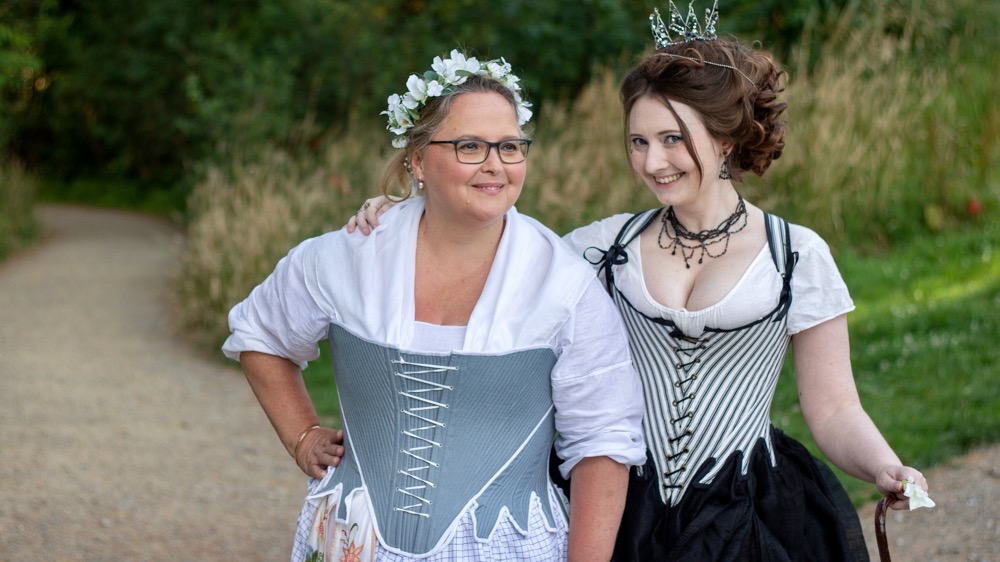
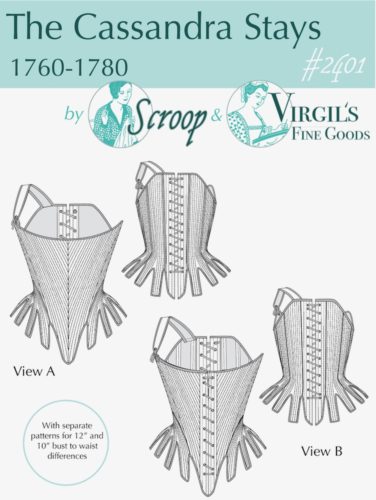
The last example might be an excellent piece of “experimental archeology” explaining how the prow front fashion came about in the first place…